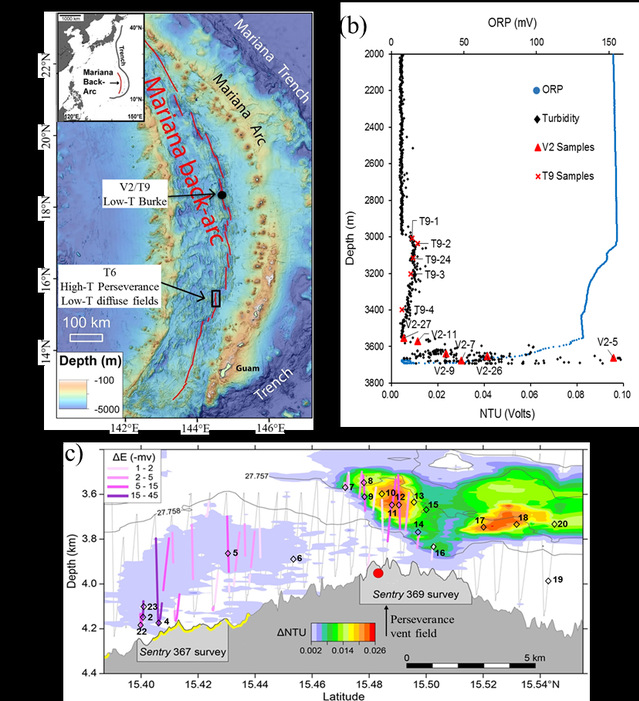hu wang a, joseph a. resing b, c,qiaoyang yan a, nathaniel j. buck b, c, susanna m. michael b, c, haiyang zhou a, meitong liu a, sharon l walker c, qunhui yang a, fuwu ji a
a state key laboratory of marine geology, tongji university, shanghai 200092, p r china
b joint institute for the study of the atmosphere and the ocean, university of washington, seattle, washington 98105, usa
c pacific marine environmental laboratory-noaa, seattle, washington 98115, usa
abstract:
we investigated the speciation of fe and distributions of fe-binding ligands in the hydrothermal plumes over high- and low-temperature vents and over diffuse venting fields above the mariana back-arc spreading center. the concentrations of ligands ([l]) and conditional stability constants (k’fel) of the natural fe ligand pool were measured by a reverse titration-competitive ligand exchange-adsorption cathodic stripping voltammetry (rt-cle-acsv). the results showed that the buoyant and non-buoyant plume samples over the low-temperature burke had the highest dissolved fe/total fe (dfe/tfe) of 82.2 ± 8.8% and labile fe/total fe (felab/tfe) of 43.3 ± 5.6%. in contrast, in the plume samples above the high-temperature perseverance field, tfe had the lowest proportions of dfe (48.8 ± 12.2%) and felab (19.4 ± 8.8%). the linear relationships between fe species and total mn (tmn) in the buoyant plume over burke suggest a simple conservative mixing with ambient seawater, which resulted in constant values of dfe/tfe. however, in the non-buoyant plume over burke, dfe/tfe decreased with plume dilution. the plume samples sourced from the diffuse flow over newly erupted lava had the highest proportion of dfe present as felab (74.6 ± 4.0%). the [l] in the buoyant plumes over low-temperature burke vent were up to 113.6 nm, and the logk’fel decreased with increasing dfe and [l], suggesting the importance of weaker ligands in stabilizing fe. for all the plume samples, the organically complexed fe (fel) constituted significant proportions of the dfe (29.0 ± 9.3%) and felab (57.5 ± 15.6%) fractions. these fe-binding ligands were likely sourced from diffuse venting fluids adjacent to the venting sites, and may be also produced by microbes within the hydrothermal plumes.
full article:


